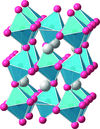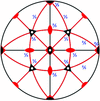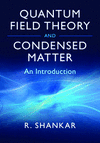issue contents
July 2018 issue

Cover illustration: `Recipes' to make materials with emergent properties as complex as magnetoelectricity can be rationally designed by mixing `ingredients' together consisting of the symmetry-breaking degrees of freedom accessible through chemical, compositional and physical control of the perovskite structure [Senn & Bristowe (2018). Acta Cryst. A74, 308-321]. The image shows how the symmetry breaking associated with cation layering and two types of magnetic ordering can combine, driving at their intersection off-centre ferroelectric displacements. Image courtesy of Mr Paul Biddle and Dr Mark Senn, drawn using ISODISTORT [Campbell et al. (2006). J. Appl. Cryst. 39, 607-614] and VESTA [Momma & Izumi (2011). J. Appl. Cryst. 44, 1272-1276].
advances
scientific commentaries

feature articles

research papers
 access
accessfoundations
research papers




 access
accessshort communications
obituaries

book reviews



 journal menu
journal menu
































